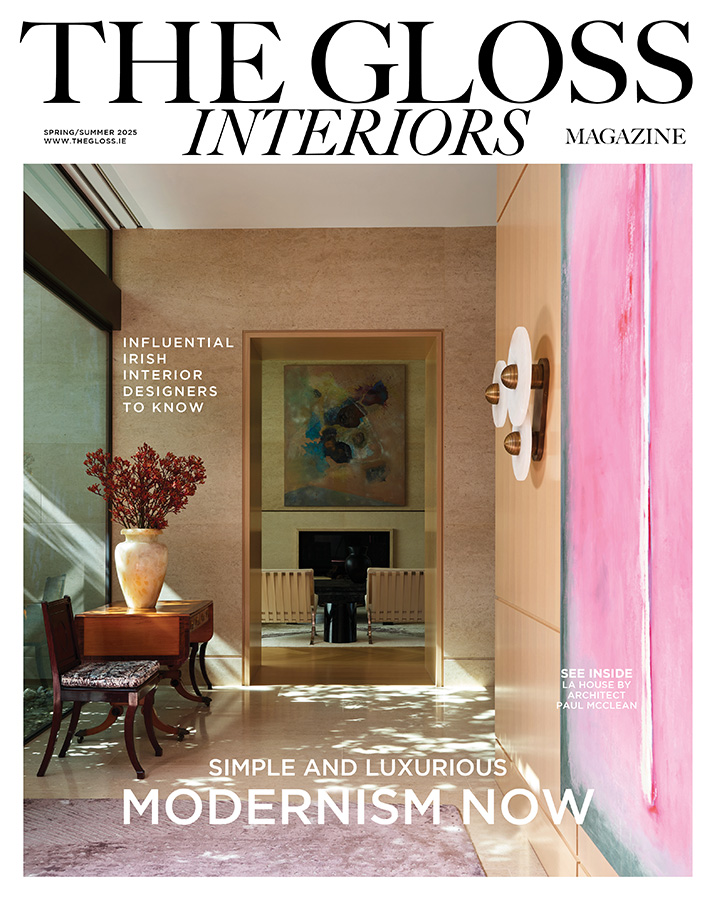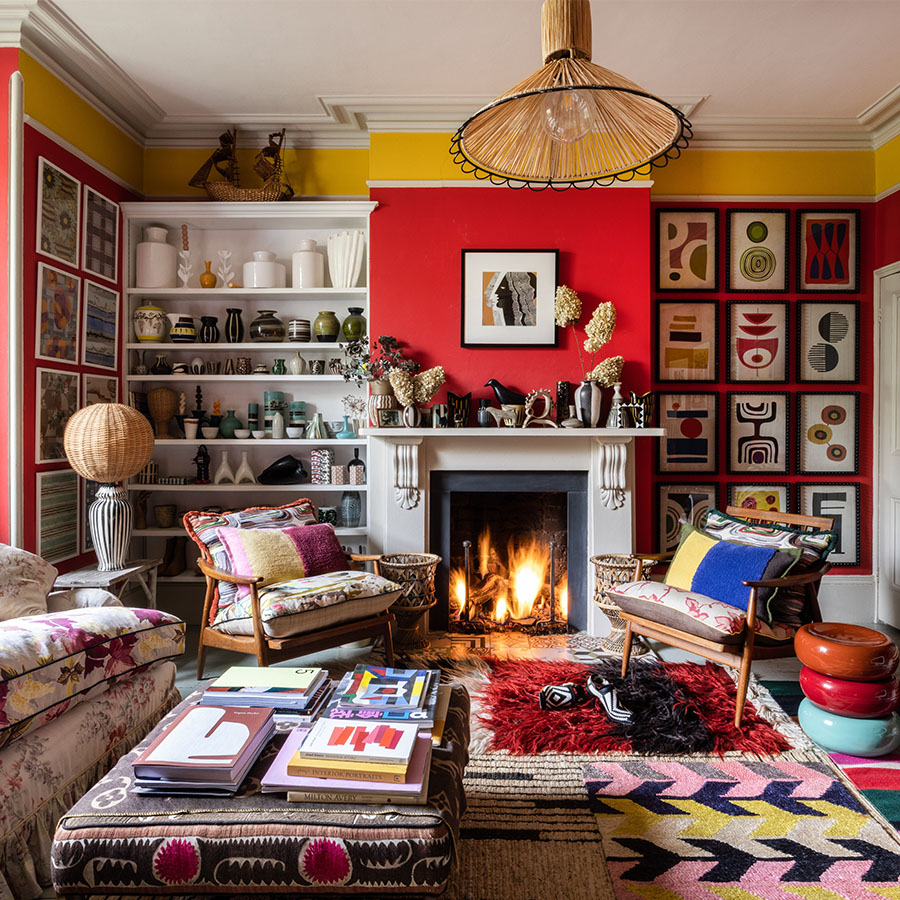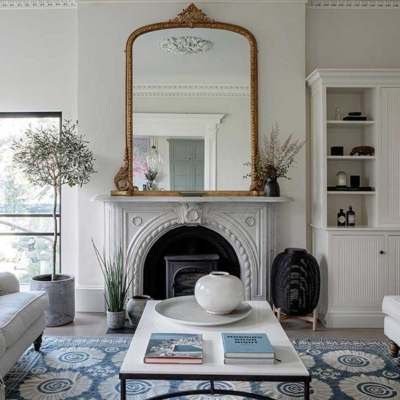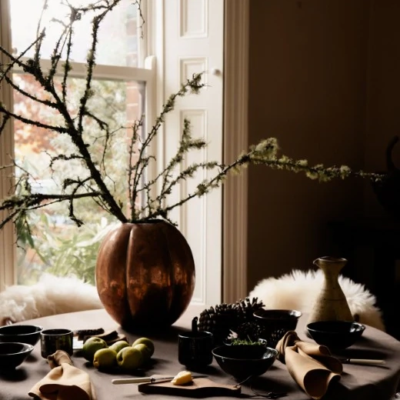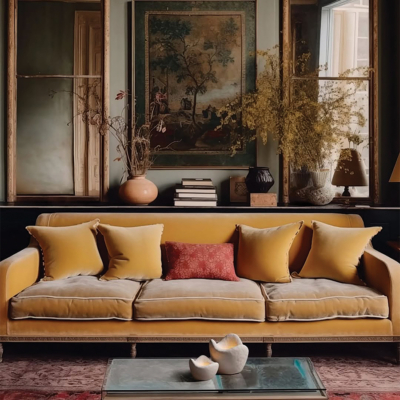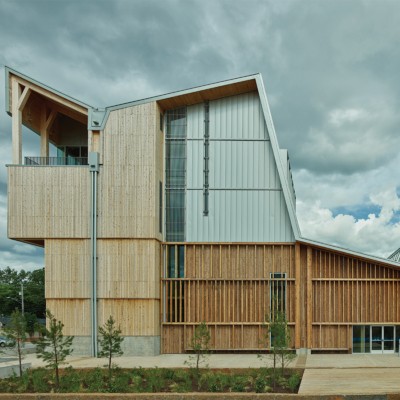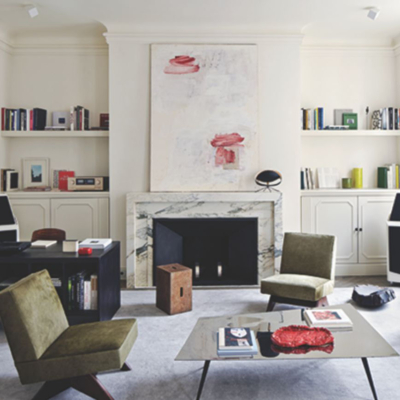Former Vogue Fashion Director Lucinda Chambers shows us inside her curated, colourful and comfortable home in London …
In 1980, twenty-one-year-old Lucinda Chambers was living in a squat house on Belsize Road, North London, sharing with four friends and flocks of visiting guests. The shower was in the kitchen, the toilet was outside, the electricity was unreliable, and for five years she lived with the constant threat of eviction.
Far from being discouraged, however, she was inspired to transform her bedroom into a joyous testament to creative expression, rag-rolling the walls in vivid hues, sewing lace doilies together to make a bedspread (and a matching dress), and adding a sea of cushions for decoration. “I bought thousands of cushions in yellow, white and blue for fifty pence each from a place in Wigmore Street,” she recalls.
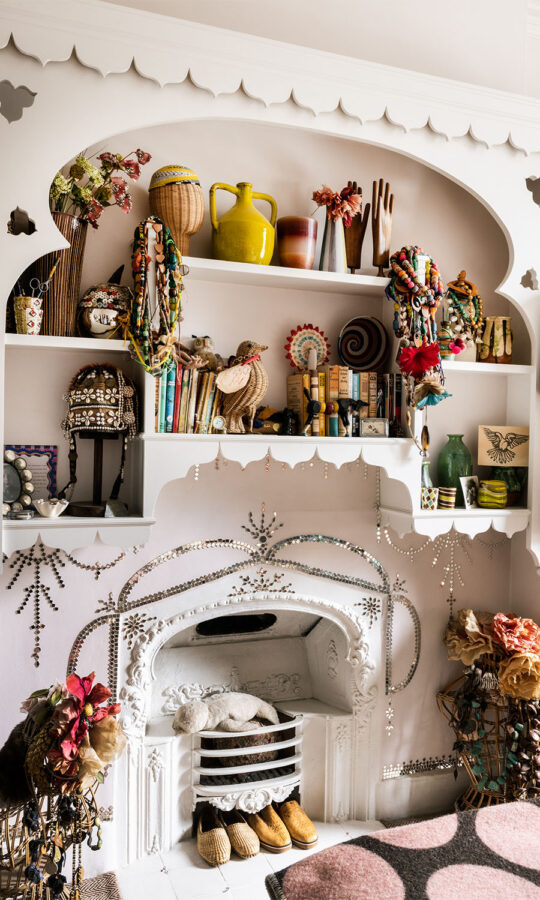
A wooden shelf made by Lucinda’s husband Simon Crow frames the main bedroom’s fireplace, embellished with tiny patterns made from mirror chips created by Zoe Bedeaux.
Lucinda took the same resourceful approach to her personal presentation, unperturbed by the mixed results. Signing up for free hairdos with trainee staff at a Walton Street salon, she ended up with a multicoloured hairstyle and patches of peroxide blond. Then, in her “purple phase” she dyed her hair to match outfits of the same hue. Her experimental wardrobe ensembles invariably included ribbons, petals, tutus and furnishing fabrics sourced during trips to Portobello Market, a weekly routine that began in childhood. “I’d stitch my clothes together so badly that the outfits were rarely intact by the end of the day. They’d literally fall apart while I was wearing them,” she recalls.
With an eclectic look and an unorthodox lifestyle, she seemed an unlikely candidate for a job at the bastion of sophistication, British Vogue. At that time, many of the elegant staff came from some of the country’s most illustrious families and typically wore cashmere sweater dresses or Chanel. What Lucinda lacked in fashion world contacts and designer clothes, she made up for in personality, energy and raw talent. A year after taking a role in the Vogue petty cash office, typing receipts for the “bad-tempered and legendary Miss Davies” she became secretary to the editor, Beatrix Miller. Four years on, she was Grace Coddington’s protégé in the fashion department, before starting a seven-year stint at Elle. It was a role that prepared her well for a triumphant return to Vogue as fashion director in 1997, a position she held for twenty-five years.
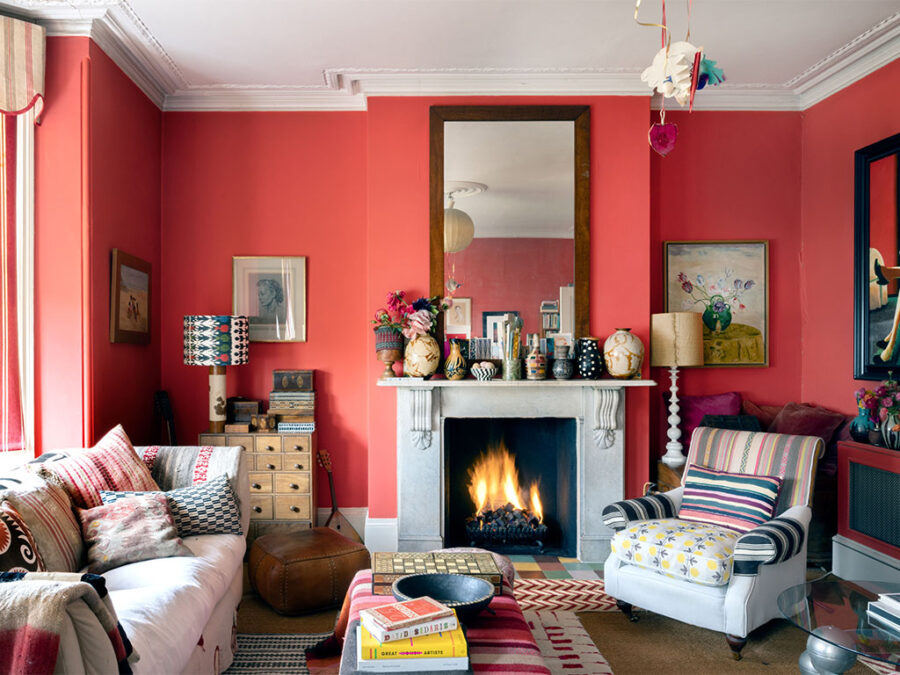
Key skills that helped her succeed in her celebrated tenures at Vogue and Elle, and consulting roles at Prada and Marni among others, had been absorbed by osmosis during her childhood. Her mother Anne was driven to create, partly out of financial necessity after she separated from her husband. She bought, renovated, redecorated and sold seventeen homes in the first eighteen years of Lucinda’s life. “My mother was incredibly industrious and could build dry stone walls and wallpaper whole flats on her own. Then, the very minute the house was finished – just as it became good – we’d sell it and be out, moving to the next one.”
Anne adapted her vision to suit a wide range of architectural styles, pinpointing and highlighting the strongest attributes of each home. “She knew how to build on the persona of each place,” Lucinda recalls. “For instance, we lived in a modern flat in Ovington Square, so she hung slats to lower the ceiling, which she then painted black, before adding mid-century white and chrome furniture to the rooms. Then, we moved to an older place in Cheyne Walk, where she installed gold Rococo furniture and beautiful tapestries.”
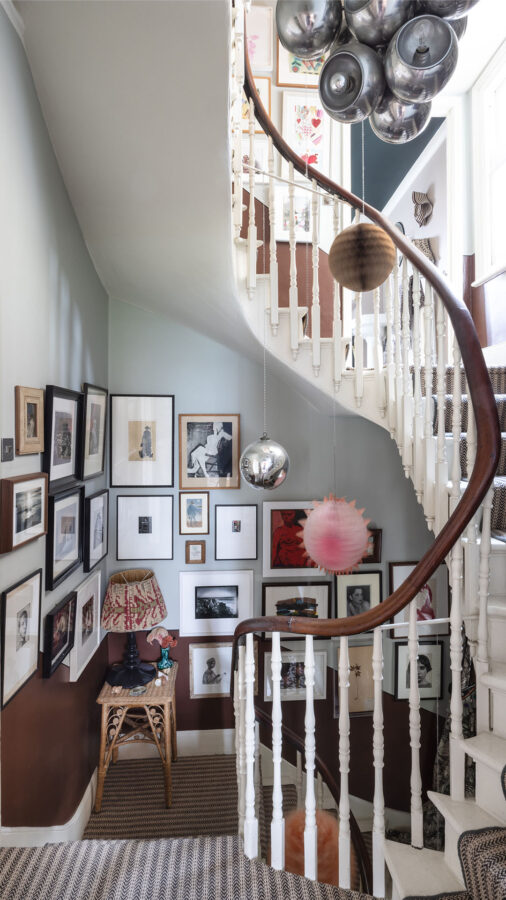
Watching from the sidelines, Lucinda came to understand that trial and error and risk-taking were essential aspects of any creative project. “I learnt from her how to be fearless in interiors and create something from nothing. And over time, I also began to realise that you only really find your own style by being quite brave and being prepared to make a lot of mistakes. That’s what helps you grow and develop,” she says.
Lucinda inherited her mother’s embrace of multiple design and architecture styles, as well as an affinity for artisan work and handmade objects. ‘I love everything,’ Lucinda enthuses. “I love designs that are complicated and detailed, but I also love the opposite, like the stark simplicity of John Pawson’s interiors and mid-century furniture.”
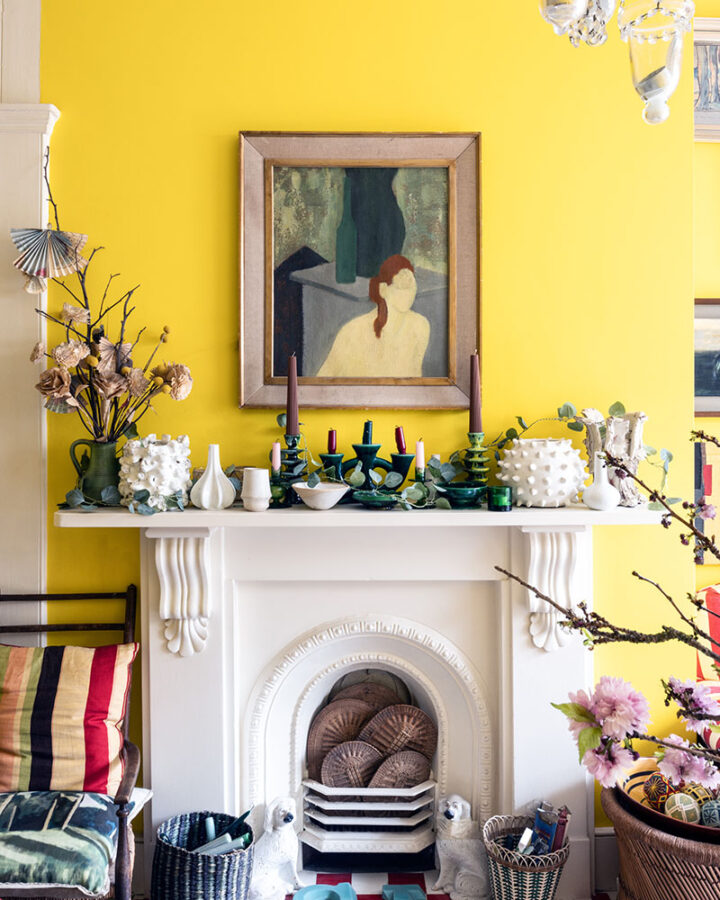
Ceramics sit on the mantle in the dining room, with wall paint by Sanderson.
Examples of each are found inside her Shepherd’s Bush home, a five-bedroom terrace where she has lived with her husband, Simon Crow, for over thirty years. It is also where she raised her three sons, Toby, Theo and Gabriele. The eclectic interiors brim with various collections, including woven baskets, framed ephemera, books, fabrics and jewellery. She has a large assortment of ceramics, including pieces from the school of the late Bernard Leach, considered to be the father of British studio ceramics.
“To me, ceramics have everything,” Lucinda says, “Three dimensions, texture and colour – every glaze makes you feel something.” As with many of the things that catch her eye, the attraction goes beyond aesthetics to something intensely personal. “Often the things I love make me wonder about the person whose hands brought the piece to life.”
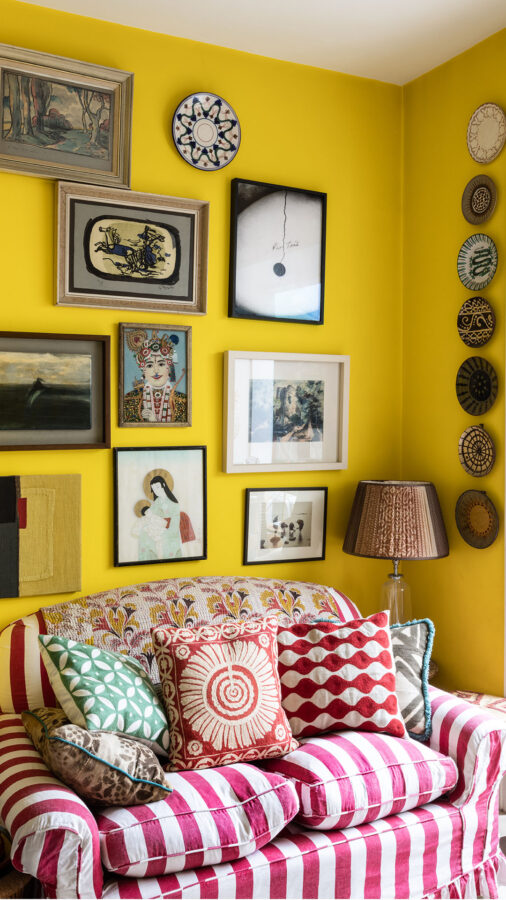
By the time Lucinda left Vogue in 2017, she had spent thirty-five years at the magazine. You might think, given she was soon to turn sixty and the owner of an inviting 19th-century stone farmhouse in Toulouse, France, she would have been tempted into early retirement. Not so. “I have a compulsion to create,” she says. Instead, she co-founded two new businesses: an online lifestyle and fashion platform, Collagerie, with former Vogue-ette Serena Hood, and a fashion label, Colville, with collaborators she’d worked with at Marni – Molly Molloy and Kristin Forss (who has since stepped out of the business).
Now that she is an official fashion designer (although she still refers to herself as a stylist), Lucinda’s colourful vision of the world is no longer confined to the pages of magazines, but can be worn by like-minded people the world over. Takinga ‘slow-fashion’ approach, most of Colville’s pieces are handmade by artisans in Morocco, Senegal, Italy, Turkey, Bangladesh and Colombia. The aim is to create clothes that appeal equally to the eye, the imagination and the conscience. “It’s the antithesis of fast fashion,” Lucinda explains.
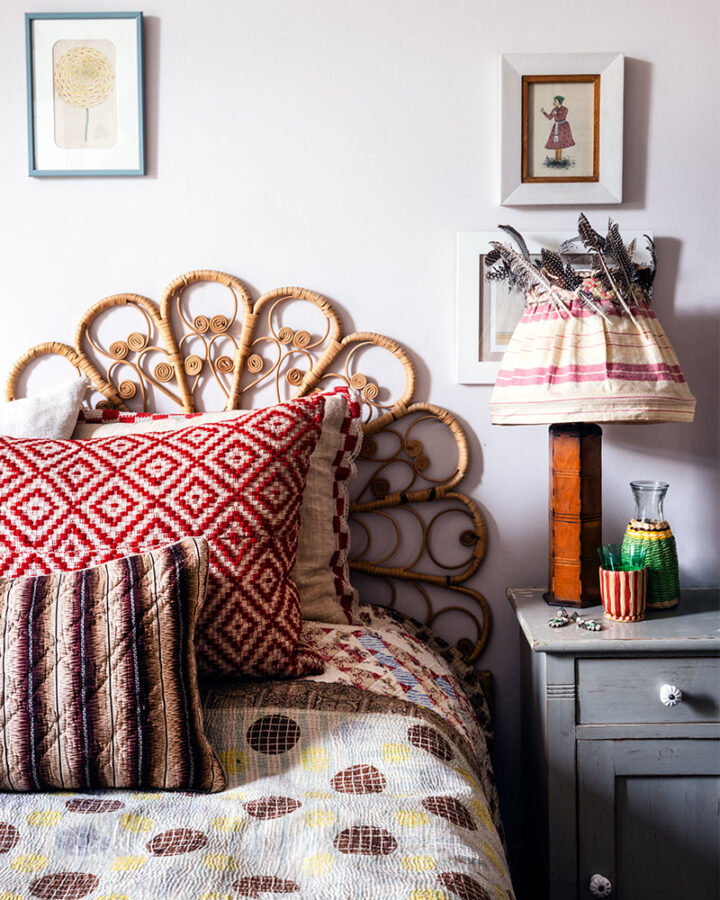
A Colville cushion with a bedspread made from fabric from a Marrakesh souk and a vintage headboard. The bedside table is from Myriad Antiques, Notting Hill and the lampshade is from Sunbury Antiques Market.
When you compare the Colville aesthetic to the interiors of Lucinda’s home, it’s as though the rooms have been loaded into a magical conversion machine and spat out in the form of asymmetrical dresses, crochet tank tops, handwoven bucket bags, quirky sweaters and upcycled track pants. It’s an identical vision in a different form, an observation that comes as no surprise to Lucinda: “For me, it’s one and the same; you decorate your body like you decorate the house you live in. No boundary separates them. It all comes from the same place, and I don’t understand why you would draw a line between the two.”
Lucinda’s approach, which extends to an unapologetic embrace of the weird and peculiar, renders most fashion and interior decorating rules irrelevant. “It should be life-enhancing, that’s all. All I want is to take pleasure in it all and get excited.” Dancing to her own improvised tune, she judges the success of a project not just on how something looks, but on how it feels, whether that is how it feels to wear an outfit or how it feels to sit in a room. Dubbed the ‘Queen of Cosy’ by some of her regular house guests, she sees no alternative. “You can’t be stylish in clothing or a home if you don’t feel comfortable,” she says.

Lucinda’s home office with piles of fabrics and works in progress.
When considering the decor of a room, she usually begins by choosing a colour to set the mood and tone. “I often start with paint swatches – putting them together to see if they talk to each other,” she says. One of the smallest rooms in the house, near the main bedroom upstairs, is a light-filled studio, complete with a circus- style, red-and-white tented canopy. The halls are painted in more muted tones, and in the few spaces that feature white walls, such as the kitchen, colourful accents are provided by the bright red AGA and a collection of hand-painted plates displayed on a custom-made shelf.
With a childlike freedom and creative exuberance, she’s happy to take advice from a youngster. Such was the case when one of her three (then young) sons suggested they paint the sitting room to match his red and yellow Lego blocks. Lucinda thought it was a great idea, so she covered the sitting room walls in a vivid vermilion red, trimmed with a border of eggy yellow. Enamoured by the result, she used the same sunny shades for the dining room and then covered the cast iron roll-top bathtub upstairs with the leftover paint.
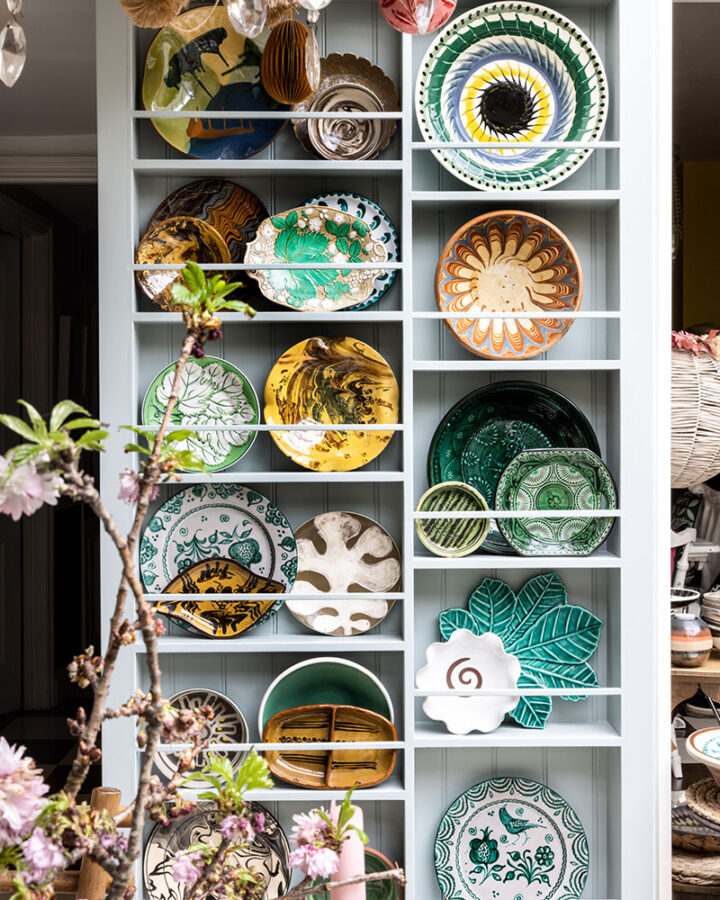
Handmade plates and platters are displayed in a custom shelf in the kitchen.
Similarly, in a February 2016 Vogue fashion editorial, photographed by Patrick Demarchelier, she used a Meccano palette of blue, yellow and red as the basis for a ‘Colour by Numbers’ story. “For me, it’s never been about trends, but always about building a picture that tells a narrative. Clothes are just one part of that fantastic big jigsaw puzzle that helps tell your story.”
Whether decorating a room or dressing a person, she’ll choose the hero pieces, then build around them. “To get the room’s building blocks right I’d choose a sofa and table before adding or subtracting other elements, like cushions and rugs, which, if I were getting dressed, would be like adding the earrings, beads or a bag.”
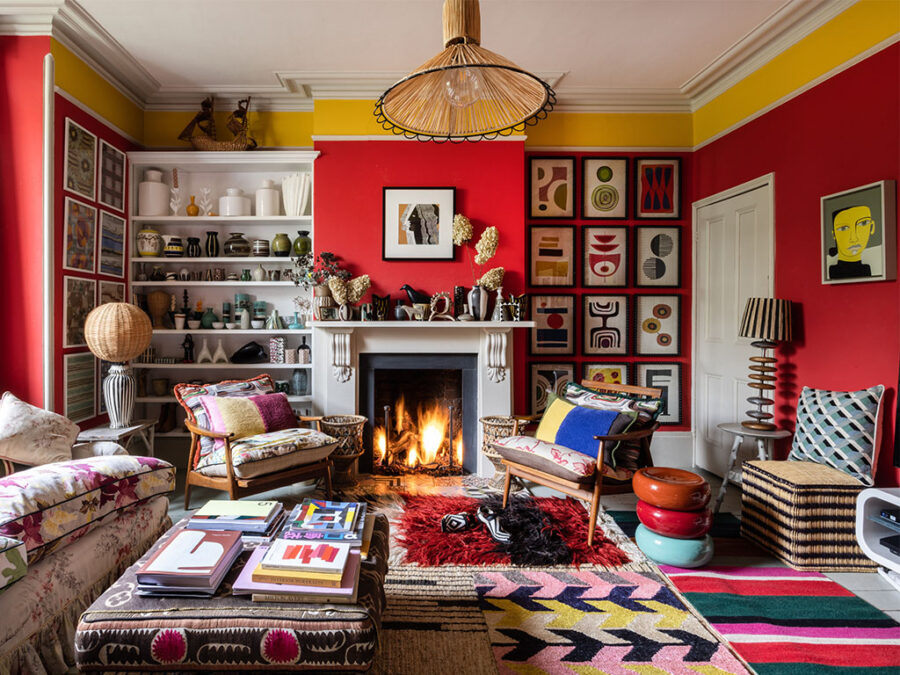
The sitting room with mid-century chair from the Sunbury Antiques Market, Colville rugs and artwork above the fireplace by Clare Packer. Framed prints to the right of the fireplace are by OKA.
The elements in her rooms are like a wild mix of dinner guests. The more diverse the combination, the more interesting the resulting visual conversations. In her sitting room, for example, she installed a super shaggy Colville rug next to one with Aztec-style geometric patterns and a third in 1970s-style colourful stripes. Granny-style wall sconce shades keep company in the dining room with chairs from eBay, brown-and-white checked floors and a wall of South African handwoven baskets. The main bedroom features bedside table lamps from a Marrakech souk, a Kantha bed quilt, mirrored wall mosaics by stylist Zoe Bedeaux and a shelf populated with books by Virginia Woolf, Agatha Christie and Saul Bellow.
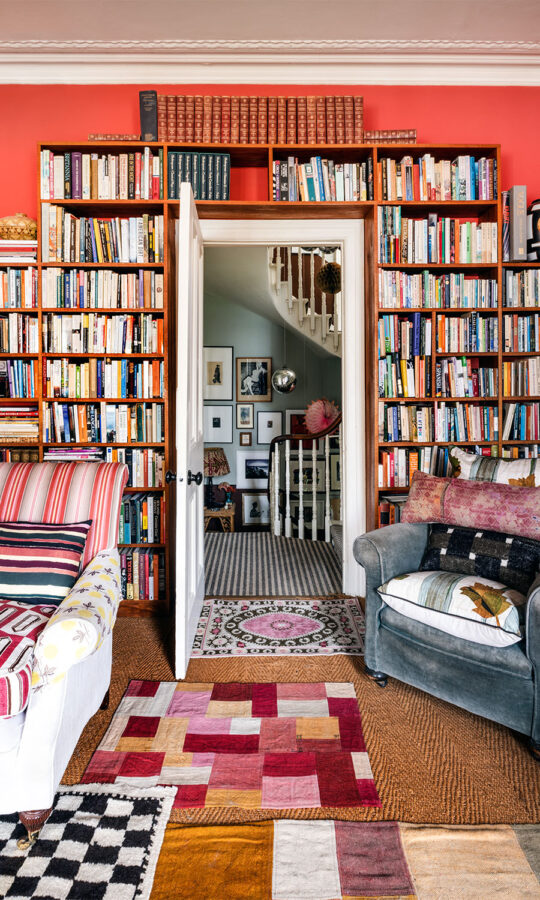
Lucinda’s ideas come from unexpected places, from naked light bulbs and lolly wrappers to toys, coloured electrical tape and refuse. “I’m a bit bonkers and find inspiration everywhere, from things I find in the world around me. I am in receive mode all the time,” she says. Her democratic approach to fashion and interiors, which extends to other facets of her life, serves as a valuable reminder, even to the least aesthetically minded among us, that you don’t need wealth to create moments of beauty every day. Just as she sought to transform the London squat of her youth into a creative castle, she recalls, “We didn’t have money growing up, but whenever we could, we would always have a bunch of flowers on the table.”
The same focus on pleasure extends to her morning rituals, which set the tone for the rest of the day. “We’ve all got to get dressed, so why not enjoy it?” she says. Much of that enjoyment comes, she believes, from being true to yourself as an individual. “I want to encourage everybody to be different, whether you are a minimalist or a maximalist. Just begin with something you respond to and fall in love with, then follow your own path and instincts. It doesn’t matter if it’s fashionable or not fashionable.” The irony is that Lucinda’s genuine lack of interest in following fashion trends has resulted in her creating trends that have been followed by legions of devotees all over the world.
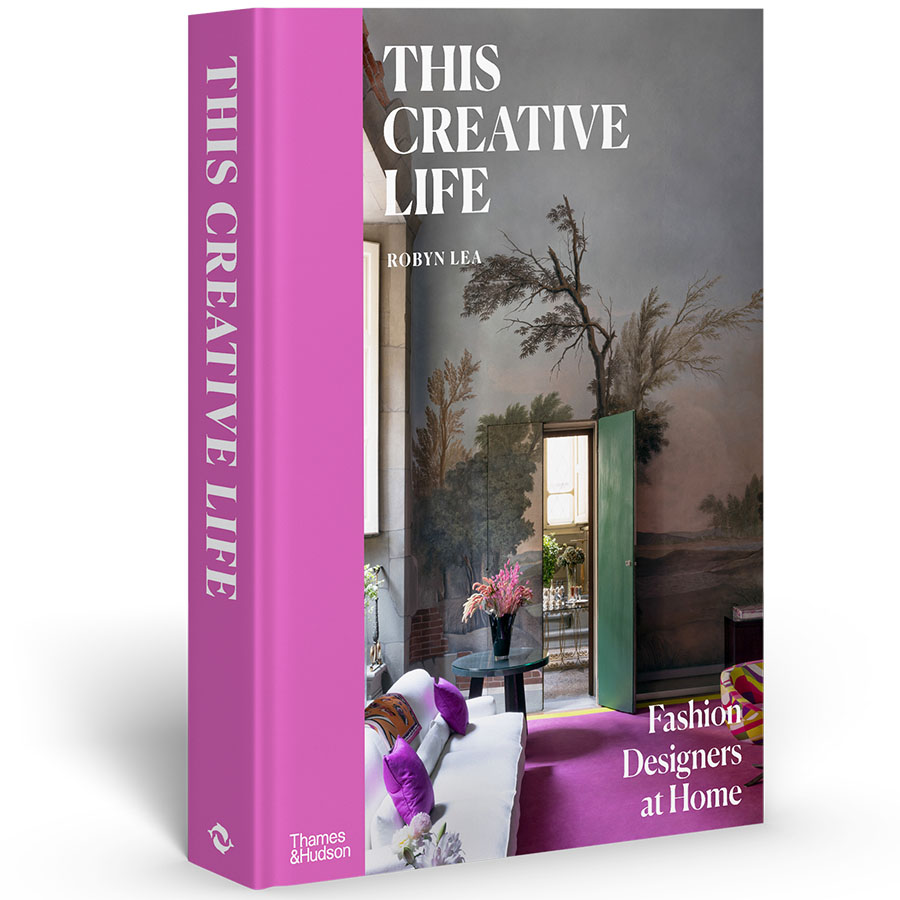
This Creative Life: Fashion Designers At Home, Robyn Lea, Thames & Hudson




